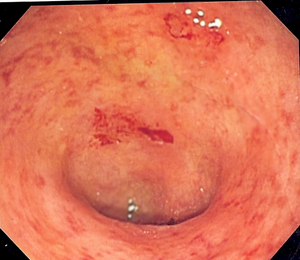by CAREY ROSSI

For most people, the general advice on nutrition is pretty straightforward: Eat plenty of fruit and vegetables. For people with ulcerative colitis, however, the advice isn’t so simple. The high-fiber content found in nutrient-rich produce can create digestion problems for people with an inflammatory bowel disease (IBD) like ulcerative colitis, especially during a flare (when inflammation is present). And certain foods can even worsen symptoms like cramping and diarrhea.
The idea that everyone should eat lots of produce is “targeted toward a general population … that does not need to know where a restroom is in all situations,” says Beth Saltz, RD, a dietitian and chef based in Los Angeles whose husband has Crohn’s disease, another type of IBD. Laura Manning, MPH, RD, a clinical nutrition coordinator in gastroenterology at Mount Sinai Hospital in New York City, agrees. “However,” she says, “someone with an IBD can learn how to incorporate fruit and vegetables in a safe way.”
In short, there’s no reason you ought to shun fruit and vegetables. Instead, think of your diet as a balancing act. You want to reap the maximum amount of nutrition from healthy fare without aggravating your symptoms, says Saltz. Read on to learn some basic principles of fruit and vegetable preparation and get recipes that you may be able to tolerate.
What Everyone With Ulcerative Colitis Should Know About Produce
People with ulcerative colitis often have multiple bouts of loose bowel movements during a flare-up. “When this occurs,” says Manning, “one should alter the texture of the diet so as to make it less abrasive on an inflamed and ulcerated colon.”
You may therefore find cooked fruit and veggies to be more easily tolerated. Cooking — whether you bake, roast, or boil — helps break down dietary fiber, making produce easier to digest.
Another trick is to peel your fruit and veggies — such as apples, pears, cucumbers, and potatoes — because the skins are particularly high in fiber. “You don’t want large amounts of insoluble fiber in the foods you eat,” Manning says. “By simply peeling and cooking, the abrasiveness is significantly lower.”
You can also try consuming fruit and vegetables in soups and smoothies.
Everyday Health for more